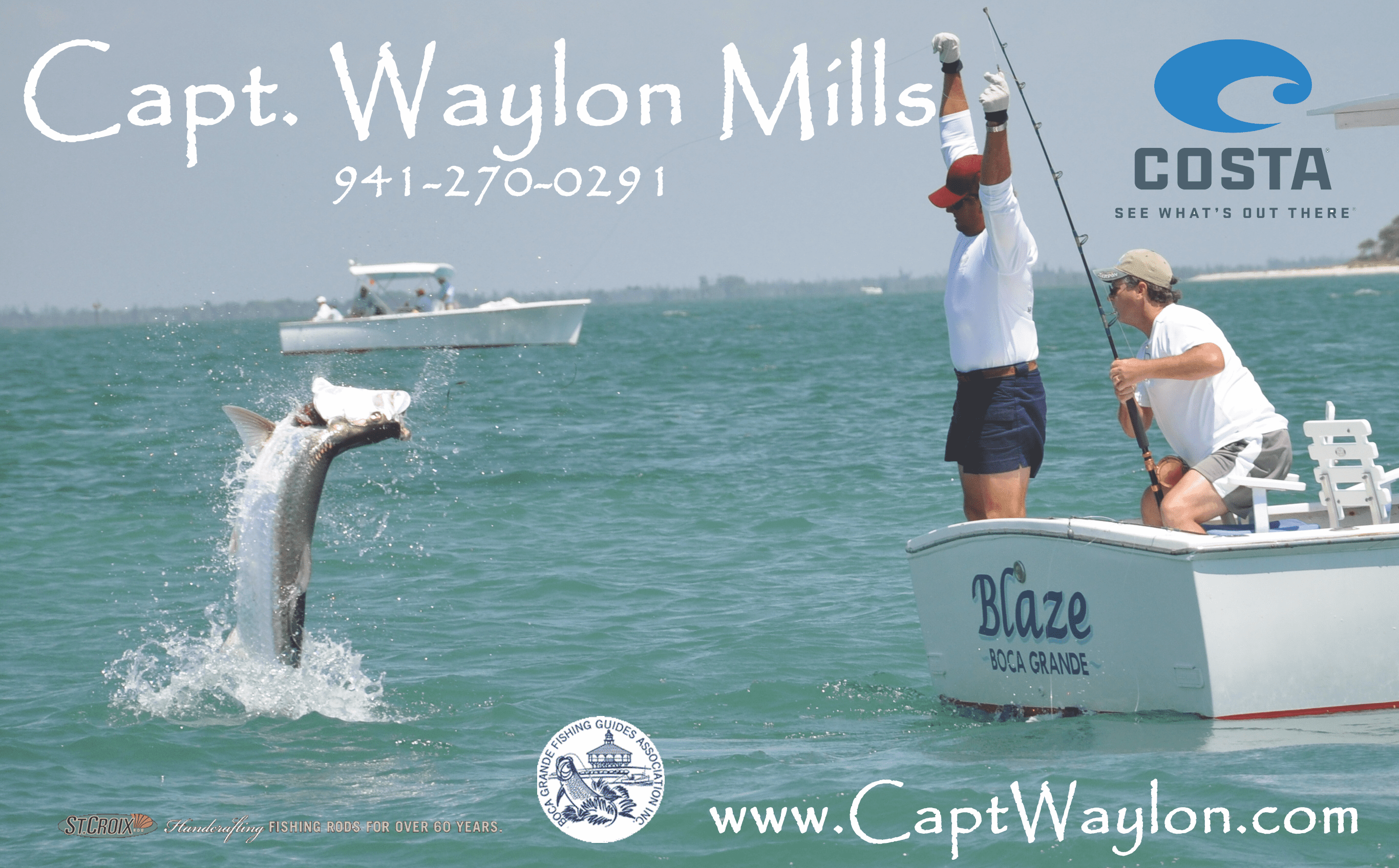Patchwork of Policies: How Florida beach towns manage public access
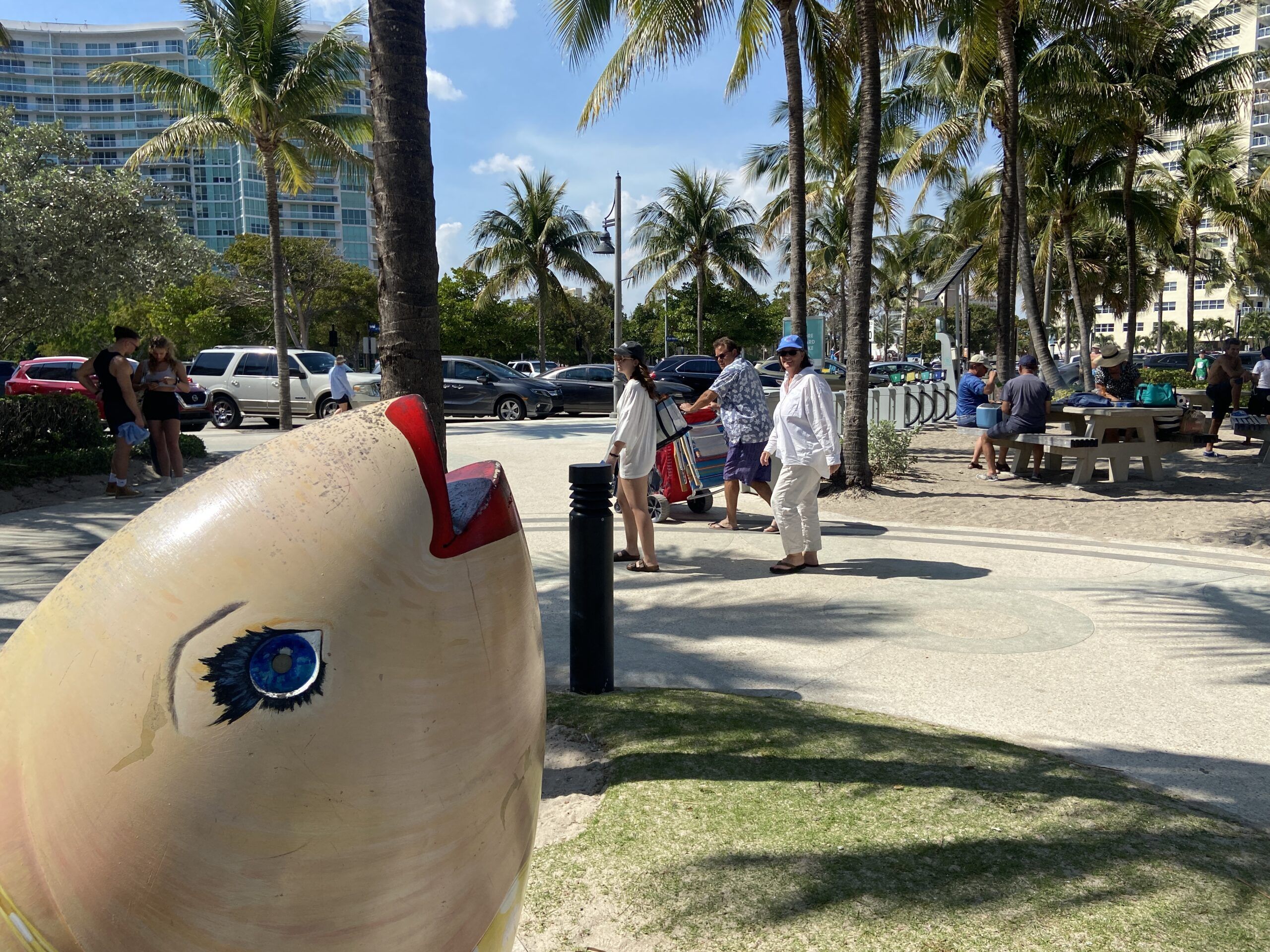
BY MARCY SHORTUSE
With a considerable population increase in Florida in the last five years, more and more Florida beach towns are being forced to consider what their options are as far as parking for their “destination” locations, specifically beaches and the more tourist-driven areas.
It’s difficult to compare the situation in Boca Grande – a tiny village on a tiny island – to many places in the state, in order to find a reasonable comparison. Not to mention, in comparison to some of the beachfront towns and barrier islands of the same size, Gasparilla Island has very few shops and restaurants. Boca Grande treasures the ones it does have, and most are acutely aware that changes, such as decreased or paid parking, leave the island’s financial ecosystem very vulnerable to changes.
Other communities around Florida have had a similar situation. There are approximately 20 coastal towns and cities of a somewhat comparable size to ours (4,000 to 7,000 people, depending on the time of year), and many of them still have free beach and downtown parking. Some have mixed parking, and there are a few that have paid parking for their beaches and other tourist spots.
For instance, Santa Rosa Beach still has free beach parking, and is quite similar to Gasparilla Island in that it has 25,000 acres of protected habitat, boutique shops, art galleries and exclusive beachfront “private” communities. Anna Maria Island is going through potential paid beach parking pains as well, but according to its chamber of commerce, they have enough beach access points so there will still be a large amount of free parking. Longboat Key has free parking for public beaches but requires permits in certain neighborhoods.
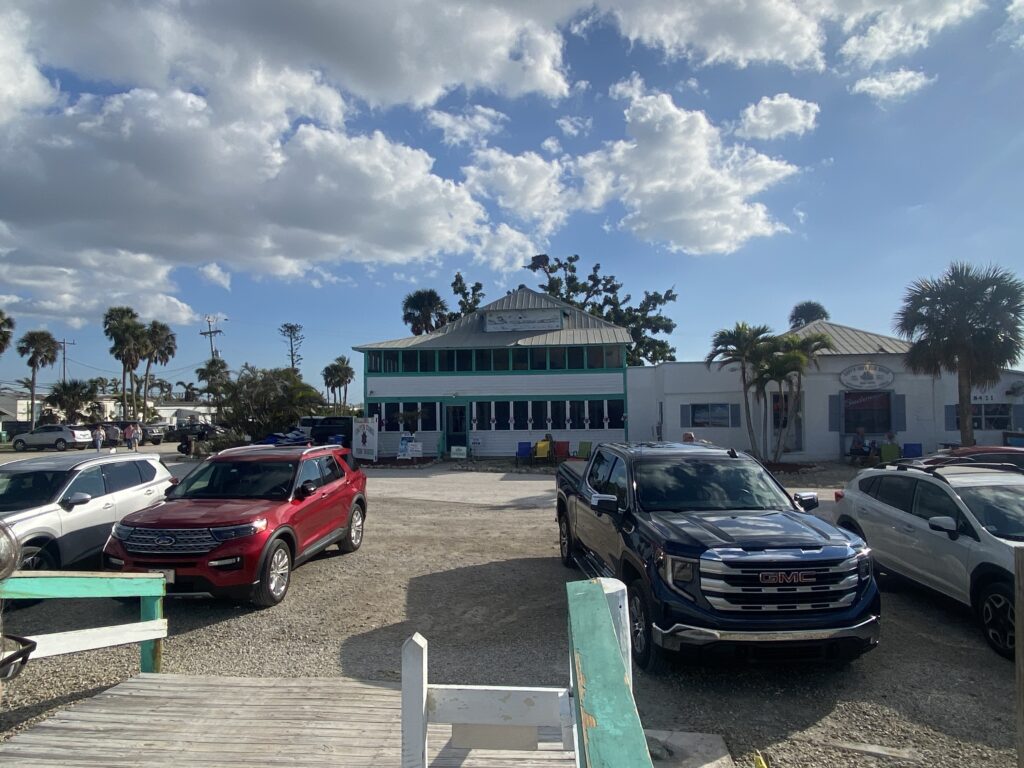
Gasparilla Island has some of the most beautiful beaches in Southwest Florida but nowhere near as many beach access points as other towns. There are few-if-any public facilities at most of them, very little expansion room to work with and only a scarce few months out of the year to keep businesses financially stable.
Top that off with plans from Lee County that include potentially decreasing parking spots, and you have a real conundrum.
Sarasota’s St. Armands
Possibly the best example is right up the road in the heart of Sarasota – St. Armands Circle. It has made a relatively recent transition to paid parking within its shopping district, which is one of the most popular and exclusive destinations of its kind. It is also so small, you can see the Gulf from the shops.
Rachel Burns is the executive director of the St. Armands Circle Merchant Association, and she has watched the awkward transition that has taken place there from free to paid parking. Prior to the change, they most certainly had a parking problem, she said, with the amount of tourism they experience and more than 100 businesses with over 1,000 employees. For years, though, they still fought to keep parking free.
“We tried for a long time to get a parking garage, and what the city of Sarasota ended up doing is putting up a parking bond. The commercial landowners pay half, which the merchants pay through their leases, and the city pays the other half through paid parking,” Burns explained.
The parking garage opened in 2019. In combination with an existing parking lot and street parking, they have expanded to now have approximately 1,600 parking spaces. There are a limited number of employee parking stickers available, Burns said – 680 in all. That means that some shop employees must pay the daily parking rates or use the few available free spaces that can be accessed by those who get to work early. Parking in the garage is free for the first two hours, then goes to $3 an hour. Street parking is $1.50 an hour and the parking lot charge is $1 an hour.
While that may sound reasonable, Burns said many people are upset about the change to paid parking.
“It does impact the merchants,” she said. “They do get a lot of complaints. We want people to come here for several hours, maybe to have lunch, to shop, to go to the beach, or to the spa or salon. There was a definite effect that paid parking had on our business owners, especially in the beginning. When visitors would come and find they had to pay for parking, they just weren’t expecting it. While it’s not uncommon, it caught them off guard.”
She added, “Paid parking isn’t a selling feature.”
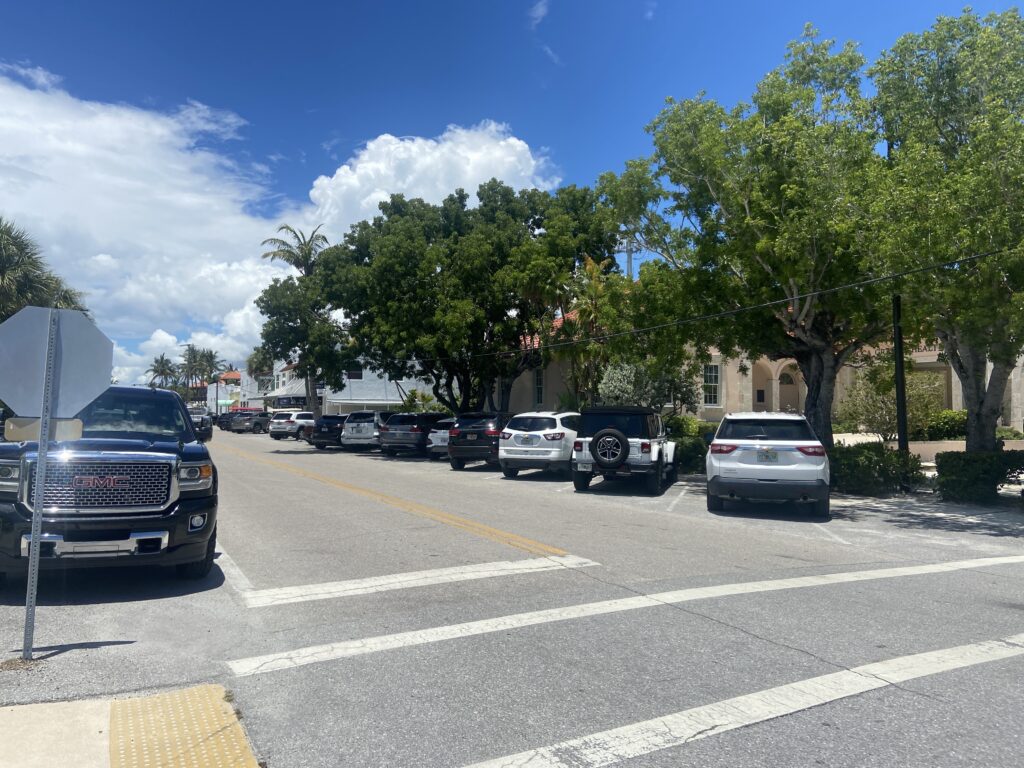
Outside of the confines of the parking garage, there is a Sarasota County parking patrol to monitor the parking situation, and there are also meters. When someone parks at a metered spot, they put their license plate number in the meter, as well as how long they anticipate being there. You have to keep an eye on your time, though, because as soon as the time runs out, you are considered to be illegally parked.
“The good thing is, you don’t have to go back to your car to redo the meter,” Burns said. “You can add time at any pay station, or through an app on your phone. The downside is, if your parking expires five minutes before you get to your car, you will get a ticket.”
There was a point in time, she said, when time limits on parking were proposed. While that might be a good idea in a bigger city, she said, in a small-town atmosphere there is no reason to do so.
“We were able to get that stopped because we don’t want people to leave; we want them to stay and enjoy it here,” she said. “We want to bring people here and give them a reason to want to stay.”
Another issue is that many people who come to enjoy the unique shops and restaurants are of a generation that isn’t as computer-savvy as others. Some patrons have issues learning how to input their license plate information into the meters, and others have problems figuring out the parking app. It’s not something that the shop owners on St. Armands Circle have control over, but inevitably the customers point the finger of blame at them when they get a ticket or can’t figure out how to use the meters properly.
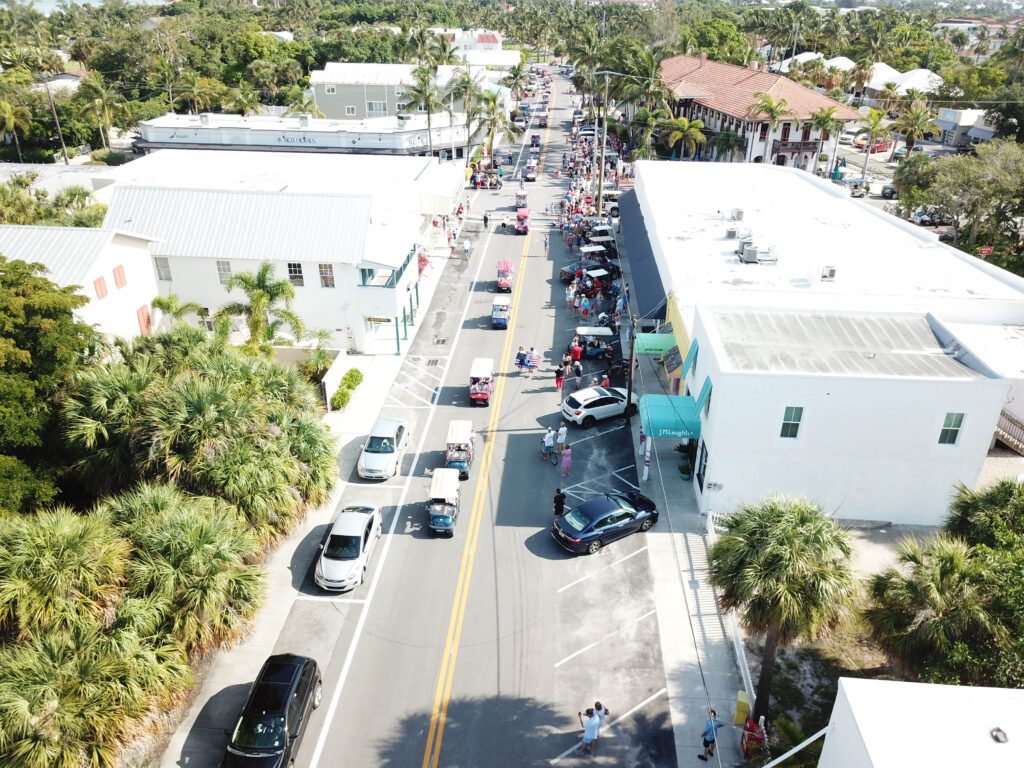
Angled destroyed spaces
There is a mix of angled and parallel parking at St. Armands. Burns recalled that two years ago, the city removed an entire section of angled parking, then eventually turned it into parallel parking.
“They did make the road wider in that spot, but we lost important parking spaces right in front of merchants,” she said, “and a lot of people struggle with parallel parking. You will notice that the angled parking is always full first, and in many of the parallel parking spots you will see vehicles sticking out into traffic. There are also a lot of people who try to park in a parallel spot and just give up, while others just drive right by without even trying. And there are definitely more accidents where parking is parallel.”
With a five-to-seven-minute drive to downtown Sarasota, as well as a mall and several other large shopping plazas where parking is free nearby, it’s easy to see that a lot of business in St. Armands Circle can be lost over something as simple as a parallel parking spot.
Burns also said that with St. Armands’ close proximity to Lido Beach, it is common for beachgoers to use parking spots on The Circle. Lido Beach has a small paid parking lot, but it provides nowhere near the space needed for such a beautiful beach. The sheriff’s office will post on social media when the lot is full, and Burns said she frequently sees those posts as early as 11 a.m. Then, she said, beachgoers park on or near St. Armands Circle.
While it can be difficult even with paid parking to find a good, accessible parking spot, there is definitely a trade-off, Burns said.
“We have a beautiful area. While you’re driving here you look out at the water, and when you’re shopping here, you’re outside, walking around, amongst the palm trees. Also, our shops are special: These are small-business owners, and each business has its own personality. It’s a unique and fun atmosphere.”
The following are more examples of small beach towns and how they handle their parking problems:
Sanibel Island
While Sanibel Island is considerably more congested than Gasparilla Island on a normal day, there are aspects of the two places that are similar. Prior to Hurricane Ian’s devastation, beach parking on Sanibel Island used to cost $5 a day, but you had to be careful and make sure you read the fine print while visiting there. Parking at one place could be quite different than at another, and parking passes didn’t work across the board. You would get a $100 fine if you were illegally parked, which increased to $150 after 14 days of nonpayment.
Due to Hurricane Ian, pay stations were removed and most beaches were closed, but they are scheduled to reopen in May. According to John Lai, the president and CEO of Sanibel & Captiva Chamber of Commerce, there are going to be about 800 dedicated parking spaces between the Sanibel Causeway, Sanibel Island and Captiva Island. All of them will open as free parking for a time. Bathrooms and other facilities at these beaches are scheduled to open later in the year.
Ponce Inlet
Ponce Inlet is a small town south of Daytona Beach in Volusia County, where the beaches are quiet, and living is less expensive. It’s one of those places in Florida where you can still drive on the beach in many places throughout the county, an asset that many enjoy.
Countywide paid beach parking began on Jan. 1 of this year – residents can apply for beach driving and off-beach parking for free. Visitors pay a $30 daily fee to drive on the beach, or can purchase a $150 annual pass. Off-beach parking for visitors is $20 a day or $100 a year with the purchase of an annual pass. Daily passes for visitors to drive on the beach are $30, while annual passes are $150.
Volusia County uses license plate readers for their parking program and everything is virtual. If you buy a new car or even have a rental car, you can update the license plate on the app and still be good to go. Parking citations are $50, and that cost increases to $100 if it isn’t paid within 14 days.
Canaveral National Seashore
Canaveral National Seashore is a barrier island in Volusia County with the longest stretch of undeveloped land on the Atlantic Ocean in Florida. Everyone must pay a fee to enter, which ranges from $15 to $25 for a day pass and $45 for an annual pass. If you have an “America the Beautiful” pass for national parks, you are already covered. To make it more worth your while, there is a clothing option section.
Indian Rocks Beach
Indian Rocks Beach, which is in Pinellas County and is considered to be part of the greater Tampa–St. Petersburg area, is also a smaller enclave where fewer tourists head. They have mixed free and paid parking, but the free parking fills up quickly. Parking fees for the paid spots at the 18 beach accesses run an average of $2.50 an hour. They keep it cheap, and it works for them.
Mexico Beach
Mexico Beach, located in Bay County, is the smallest on this list. As of the 2025 official census they have 1,259 residents. It is in the relative vicinity of Apalachicola and Panama City, which is to say that there is nothing else around it. They were hit hard by Hurricane Michael in 2018 but are coming back strong, and their beaches are open and ready for the few tourists who love the beach, and nothing but the beach. It has no traffic lights or chain restaurants, but it does have a great fish house. Fishing, boating and going to the beach are the entertainment you will find there.
Mexico Beach is incredibly similar to Gasparilla Island in size, and in the fact that they have several beach walkovers and parks. To add to that, they have public restrooms at almost every park, as well as picnic areas.
While they had at one time flirted with the idea of adding paid parking to a few of their beach locations, they have always decided against it. Kathy, the lone representative at the Mexico Beach Tourism Center, said that they have a very close-knit community and hold dear every visitor that stops by.
“We do not have paid parking, and hopefully we never will,” she said.
At top, a landscaped parking area in Pompano Beach for their Atlantic Ocean beach access. It runs from $1.25 to over $3 an hour; there are no meters. Photo by Garland








